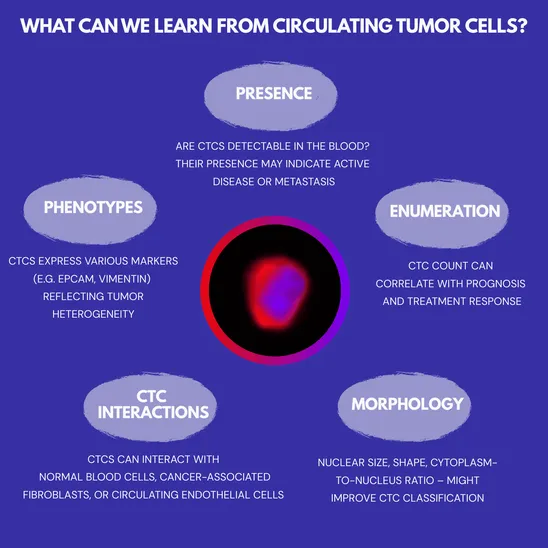Popular science materials
Understanding cancer and circulating tumor cells (CTCs)
A few words about…
Discover the Basics
Here you will find popular science resources and graphics that explain the complex biological processes behind cancer development and treatment in a simple way. A special focus is given to circulating tumor cells (CTCs) and their role in diagnostics and metastasis research.
What is Cancer?
Cancer begins when a single cell in otherwise healthy tissue undergoes genetic and/or epigenetic changes that disrupt its normal growth control. Instead of stopping division or dying at the right time, the altered cell continues to multiply, gradually forming a small cluster of abnormal cells. As these cancer cells accumulate, they can stimulate the growth of new blood vessels (angiogenesis) to secure oxygen and nutrients. This ability not only allows the tumor to grow but also provides a pathway for cancer cells to enter the circulation and spread to other parts of the body.
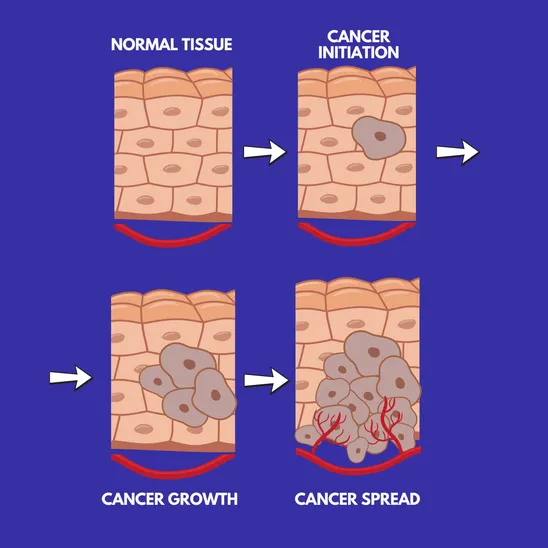
Cancer Risk Factors
The risk of developing cancer is influenced by a combination of genetic, environmental, and lifestyle factors. Key contributors include family history, age, smoking, alcohol consumption, obesity, poor diet, exposure to ultraviolet radiation and contact with carcinogenic substances. Certain viruses and chronic infections can also play a role in cancer development. Having risk factors does not mean cancer will inevitably occur, but it does increase the likelihood - highlighting the importance of prevention and early detection.
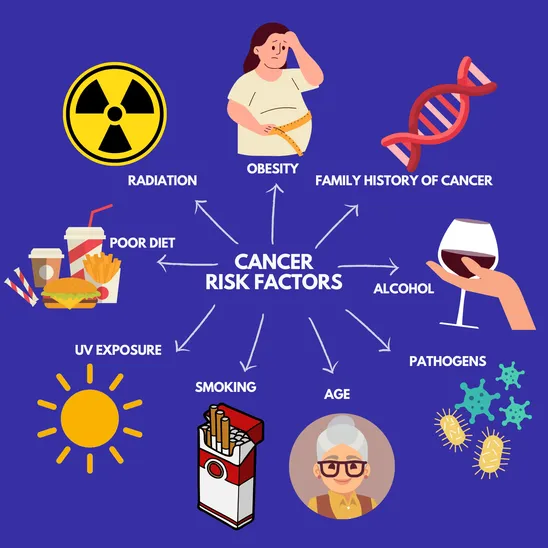
How Cancer Spreads (Metastasis)
The most life-threatening feature of cancer is its ability to spread and form metastases. Cancer cells from the primary tumor can detach, invade surrounding tissue, and enter blood or lymphatic vessels. Through circulation, they travel to distant organs, where they may establish secondary tumors. While a primary tumor represents a localized disease, the presence of metastases indicates a systemic condition, which is far more difficult to treat and accounts for the majority of cancer-related deaths.
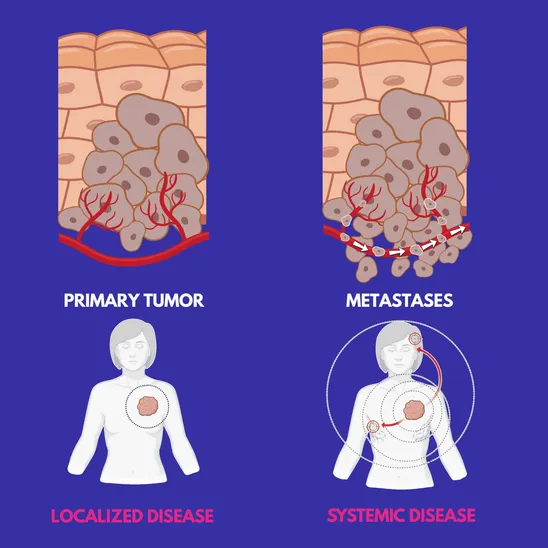
Precision Oncology and the Role of Biomarkers
Modern oncology is shifting from a “one-size-fits-all” approach toward therapies tailored to the biology of individual patient’s tumor. At the core of this shift are biomarkers - measurable features that provide insight into the characteristics of cancer. A biomarker can be e.g. a gene mutation, an overexpressed gene, presence of a specific molecule or cells such as circulating tumor cells (CTCs). Biomarkers help physicians diagnose cancer more accurately, predict its progression, and select targeted therapies that specifically address molecular alterations. This approach makes treatment more effective while minimizing unnecessary side effects.
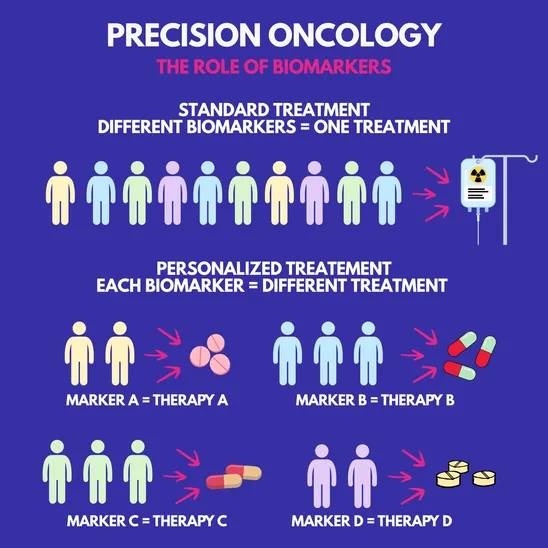
Liquid Biopsy – Broad Applications
Liquid biopsy is an innovative diagnostic method that analyzes biological material present in body fluids - not only in blood, but also in cerebrospinal fluid, saliva, breast milk, urine, or sperm. Using advanced technologies, fragments of DNA, RNA, proteins, or even intact cells originating from tumors (and other diseases) can be detected. Liquid biopsy has applications beyond oncology, including neurodegenerative and cardiological diseases. Its key advantage lies in being not or minimally invasive and repeatable, allowing real-time monitoring of disease progression and treatment response.
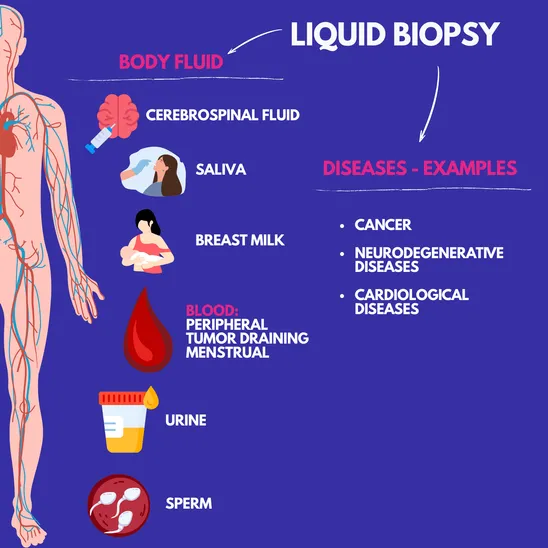
Liquid Biopsy vs. Standard Biopsy
A standard biopsy involves collecting a tissue sample directly from the tumor for histological and molecular analysis. While it provides valuable information, it is moderately invasive, carries risks of complications, and is difficult or even impossible to repeat. A liquid biopsy, in contrast, analyzes cancer-derived material circulating in the blood, such as cell-free DNA, RNA, or circulating tumor cells (CTCs). This method is minimally invasive, can be performed multiple times, and reflects the biology of the disease in a specific timepoint of disease. For these reasons, liquid biopsy is emerging as a powerful tool for diagnosis, monitoring, and guiding cancer treatment.
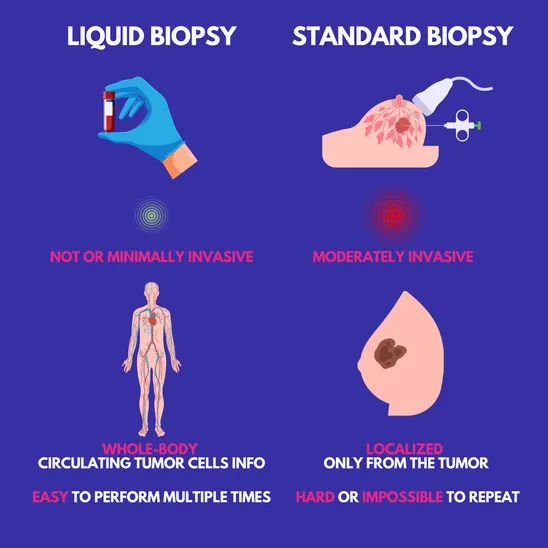
Circulating Tumor Cells (CTCs) and Detection Technologies
Circulating tumor cells (CTCs) are cancer cells that detach from primary or metastatic tumors and enter the bloodstream. They are extremely rare, sometimes only a few among billions of normal blood cells, which makes their detection highly challenging. Advanced ultrasensitive technologies are used to capture and study them, including imaging flow cytometry, microfluidic chips, size-based filtration, and antibody-based enrichment methods. The ability to analyze CTCs provides a minimally invasive way to gain real-time insights into tumor biology and metastasis.
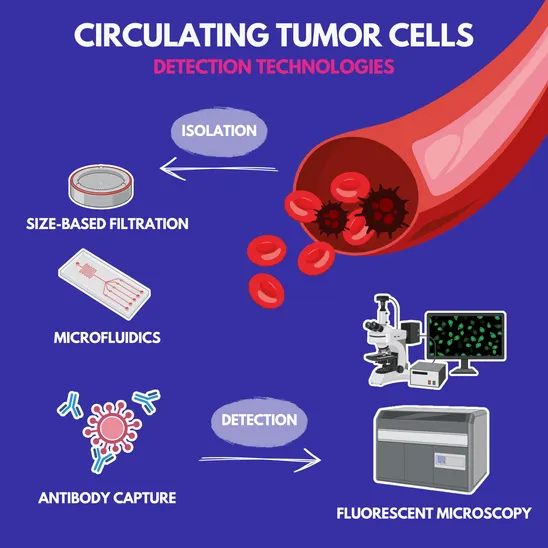
What Can Be Analyzed in Circulating Tumor Cells (CTCs)?
Circulating tumor cells (CTCs) provide a wealth of information about cancer biology. Their presence and number in the blood may indicate active disease or metastatic potential and often correlate with prognosis and treatment response. CTCs also display diverse phenotypes, reflecting tumor heterogeneity, and can interact with other blood cells, enhancing their survival and metastatic ability. Their morphological analysis - such as nuclear size, cell shape, or the cytoplasm-to-nucleus ratio – might improve CTCs classification. Altogether, CTCs serve not only as important biomarkers but also as a source of knowledge about tumor dynamics and spread.
